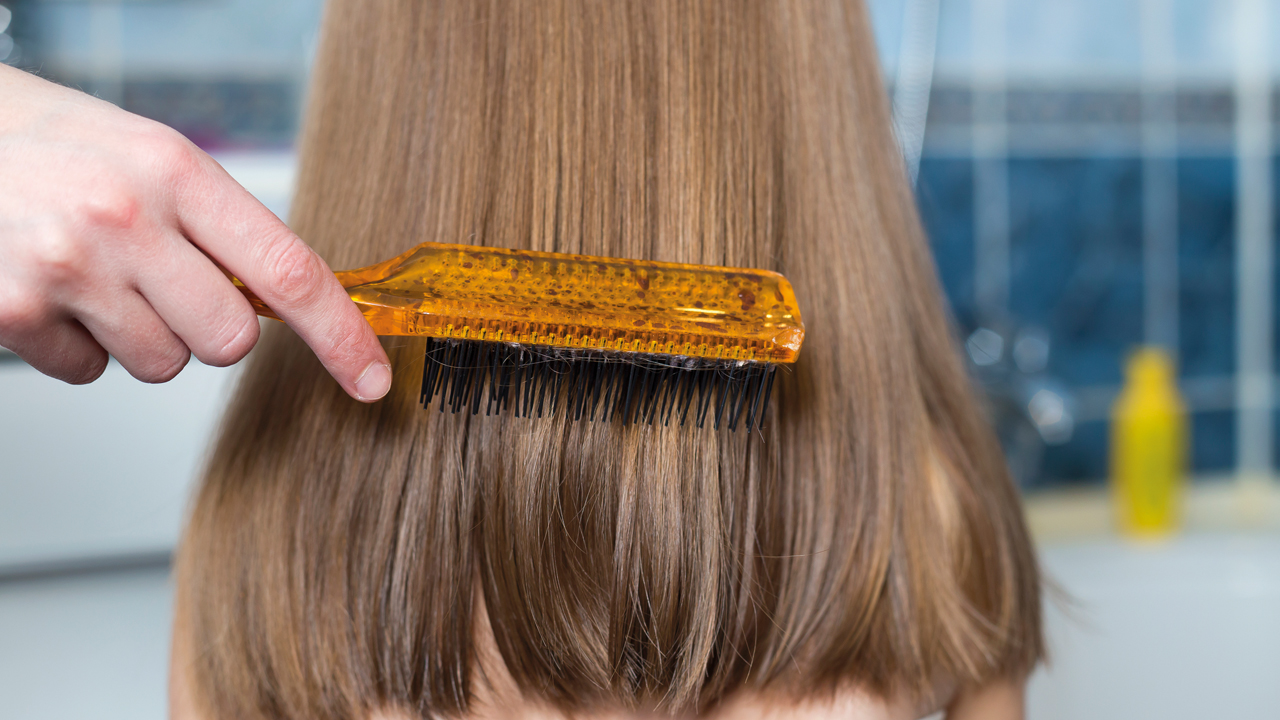In OTC
Follow this topic
Bookmark
Record learning outcomes
Back to school is often the marker for a series of unwanted guests to start making the rounds throughout households in the UK.
“Head lice infestations are more common at the start of term as that’s when children and families come into close contact again after a break,” explains Joanna Ibarra, programme advisor at Community Hygiene Concern (CHC).
Over the past few years, pharmacy teams may have noticed a decline in head lice product sales and advice. “We have anecdotal evidence for the UK that there was a reduction in cases during the lockdowns when schools were closed,” says Joanna. “We also felt there was a downturn in purchase of head lice treatments in the UK, but equally there would have been families who wouldn’t have been able to afford to treat them then.”
Elizabeth Brunton, deputy director at Insect Research & Development, agrees. “Perhaps parents were checking less as head lice is seen as a school issue. However, market data shows that from June 2020 to June 2021 the market value dropped by 45 per cent. Now we are seeing more contact from families wanting help, but it’s not back to pre-pandemic levels yet.”
Seeing sales starting to increase indicates the need for pharmacy teams to have up to date knowledge on the condition in preparation for any customer queries. “Pharmacy is the first line of support for parents in need. Staff play a really important role and have a responsibility to be familiar with the latest guidance on treatment,” explains Joanna.
Under the microscope
To be able to effectively explain to customers how to treat and prevent head lice, it helps to understand their life cycle:
- Egg (ova): louse eggs are laid close to the scalp and are attached to hair with a glue-like substance. They are oval shaped, translucent and may look like dandruff. They take seven to 10 days to hatch
- Nymphs: these are baby lice that hatch from the eggs and are about the size of a pin head. They are pearly white and take seven to 10 days to mature into adult lice
- Adult lice: these are up to 3mm long, tan to grey in colour and have six legs ending in hook-like claws to hold onto hair. The female louse lays 50-150 eggs during her 30–40-day life span.
Lice can only spread via head-to-head contact. They can’t jump, fly or swim, instead they crawl between hair shafts from one head to another. It’s unlikely they can be spread by sharing hats, combs or pillows and they can’t be spread by pets. Lice are dependent on humans – once detached from a head they can only survive for one or two days.
They can affect people any age, but those most affected are children aged four to 11. Infections are also more common in girls.
Itching is not always a sign of infection, and often this doesn’t develop until several weeks later. Sometimes a rash may appear on the back of the neck and behind ears, caused by a reaction to louse faeces.
Treating head lice
Detection combing is thought to be the most reliable way to spot head lice, however, “wet combing is much more effective than dry combing for detecting lice”, according to Joanna, because lice remain still when wet.
It’s important to use a comb specially designed for detection and removal of lice, with teeth 0.2-0.3mm apart. A finer comb is needed to remove eggs – metal combs are not recommended.
The wet combing method should be carried out in four sessions over two weeks, on days one, five, nine and 13. Two combing procedures are recommended on each session.
If reinfection occurs, as seen by adult lice at session two, three or four, further half-weekly sessions should continue until no adult lice are seen at three consecutive sessions, advises CHC.
The method:
- Wash hair with ordinary shampoo
- Apply lots of ordinary conditioner
- Use a wide toothed comb to untangle hair
- Use the detection comb once the wide-toothed comb moves freely through hair
- Slot teeth of detection comb into hair at roots, touching the scalp
- Slowly draw the comb through to tips of hair
- Check comb for lice after each stroke, removing by rinsing or wiping
- Work through the head in sections
- Rinse out the conditioner
- Repeat combing to check for any missed lice.
Regular head checks are essential, says Joanna. “If parents have time, they can do a weekly check when washing children’s hair. There’s no point doing a dry head check. A really good way to tackle lice is for schools to pick a day once a term when all parents check children’s heads and treat if needed. Pharmacy staff can check the schools page on the CHC website and give parents the date of the next national bug busting day.” These are 31 October, 31 January and 15 June.
Elizabeth also stresses the importance of year-round vigilance. “Head lice can be picked up throughout the school year and is not tied to term time. They can be passed from person to person by close head-to-head contact through sleepovers, play dates, clubs and sports activities. It’s not just a school issue.”
Physical insecticides are silicone or fatty acid-ester based products which kill lice by coating their surface and suffocating them. They include: dimeticone 4% gel, lotion or spray; dimeticone 95% lotions; dimeticone 92% spray; isopropyl myristate and cyclomethicone solution; isopropyl myristate and isopropyl alcohol aerosol.
It’s important to remind customers to read instructions carefully. “Treatment failure often occurs because it has not been applied properly or for the correct amount of time. As with any head lice product, follow the manufacturer’s instructions, totally saturate the hair and scalp and check seven to 10 days later to see if repeat treatment is needed,” says Elizabeth.
Customers should be reminded to keep hair away from naked flames when using dimeticone.

Time to BUST some myths
| MYTH | FACT |
| "Children with lice should not be in school" |
There is no need for affected children to stay at home until the infection is cleared. |
| "Head lice prefer dirty hair" |
“This is simply not true, and it’s important for staff to make clear lice have nothing to do with poor hygiene,” says Joanna Ibarra, programme advisor at Community Hygiene Concern. |
| "You should fumigate all bedding and clothing" |
No need to treat clothing or bedding that has been in contact with lice. |
| "Wet combing doesn't work" |
It depends on the choice of comb and using the correct method. |
| "Dry combing is as effective as wet combing to detect lice" |
Wet combing is much more reliable as wet lice stay still. |
| "Itching is the first sign you have lice" |
Some people never itch, and those who do take several weeks after catching lice. |
| "If you have nits (eggs) in your hair, you should treat it" |
These are empty eggshells which stay stuck to hair after lice hatch out. You only need to treat a live infection. |
| "Lice prefer clean hair" |
Lice are happy on any type of hair. |
| "Only children get head lice" |
While 80 per cent of cases are in children, adults can get them too. |
Other common parasites
There are three types of parasites that live on humans:
- Single-cell organisms (protozoa, microsporidia). Protozoa can multiply in human hosts and cause infection. They usually spread via contaminated food or water or through the bite of a mosquito or sand fly. Diseases they cause include malaria, toxoplasmosis, African Trypanosomiasis and Leishmaniasis. Microsporidia mainly affect people who are immune compromised. Infection includes chronic diarrhoea and corneal disease.
- Multi-cellular helminths (worms). Helminths are parasitic worms divided into roundworms and flat worms, such as tapeworm. They are responsible for more disease globally than malaria or tuberculosis (TB). The most common diseases they cause are ascariasis, trichuriasis, hookworm and schistosomiasis.
- Ectoparasites (scabies, lice). These inhabit the skin in humans, common examples include lice, fleas, bed bugs, mites and ticks.

